
Types of the 3¢ Offset Washington
Types III and IV
Five Areas that Distinguish Types III and IV
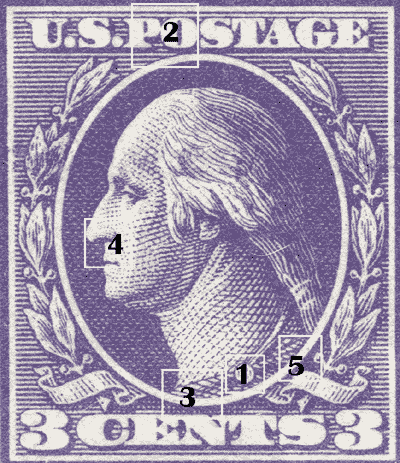
| Area on Map | Part of Design | What to Look For |
1 |
Toga Button |
Type III:the line through the center dot in the button appears broken Type IV: the line through the center dot in the button appears to be solid |
2 |
"P" and "O" of "POSTAGE" | Type III:"P" and
"O" of "POSTAGE" are clearly distinct |
| 3 | Toga Rope | Type III: top line of toga
rope is thin or broken, |
| 4 | Shape of Nose | Type III: the upward curving
line of the nose is strong |
| 5 | Oval Frame | Type III: oval frame appears
weak or broken |
The key to identifying these stamps is to examine the toga button and the letters "P" and "O" in "POSTAGE". The Type III has a broken line through the center of the toga button and the Type IV has a solid line in the button. In the Type III the "P" and "O" of "POSTAGE" appear to be joined and in the Type IV the "P" and "O" of "POSTAGE" are clearly distinct. In the case of a cancellation covering the identifying area, if the ink is light, or you simply have a faded copy, you will need to examine many of the areas. In particular, if you think the stamp is a scarcer variety, you should examine all of the areas for positive identification. A powerful magnifying glass, microscope, or a high resolution scan (600 to 1200 dpi) will greatly aid in identifying the type.
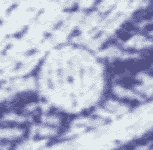
Toga Button
Type III
The line through the center dot in the toga button appears broken. Sometimes it may be so weak, as in this case, as to not give a definitive identification. However, when compared to the Type IV at right, the distinction becomes clearer.
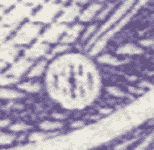
Toga Button
Type IV
The line through the center dot in the toga button appears to be solid. This is usually quite apparent.
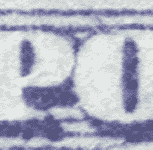
"P" and "O" of "POSTAGE"
Type III
The "P" and "O" of "POSTAGE" are clearly distinct and separated by a solid line of color.
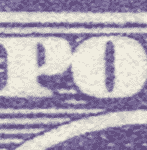
"P" and "O" of "POSTAGE"
Type IV
The "P" and "O" of "POSTAGE" appear to be joined. This may be the most recognizable differentiating feature of the Type III and IV stamps.
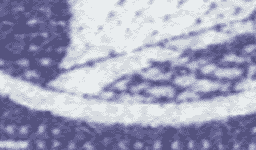
Toga Rope
Type III
The top line of the toga rope is thin or broken, the rope lines are wider at the bottom than top, and the second line from the right is short or missing entirely. In this example many of the lines are missing, but the base of the lines inside the rope are discernibly thicker than the top of the lines.
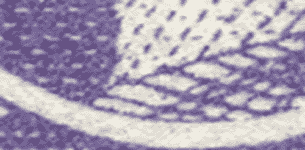
Toga Rope
Type IV
The top line of the toga rope is solid and thicker than the Type III. The rope lines are consistent top to bottom, and the second line from the right is intact.
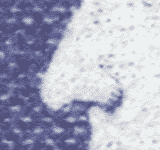
Shape of Nose
Type III
The upward curving line of the nostril is strong relative to the other shading of the nose. This is a weak, yet typical, example of the Type III, it is the relative nature of the shading that counts.
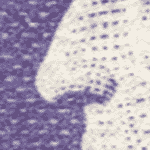
Shape of Nose
Type IV
The upward curving line of the nostril is similar relative to the rest of the shading of the nose.
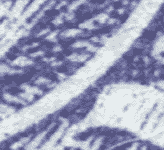
Oval Frame
Type III
The outline of the inner portrait oval from about the toga button to the point at which the hair braid meets the oval is solid and complete. Again, this is a weak, typical example of the Type III, yet the inner portrait oval line is stronger than the Type IV at right.
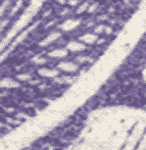
Oval Frame
Type IV
The outline of the inner portrait oval from about the toga button to the point at which the hair braid meets the oval is weak and often incomplete.
If your stamp is rotary or flat plate, you are on the wrong page and should go here:
3¢ Rotary and Flat Plate Types
Additional Information





